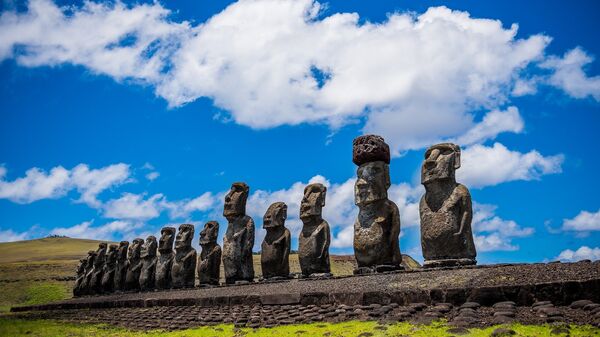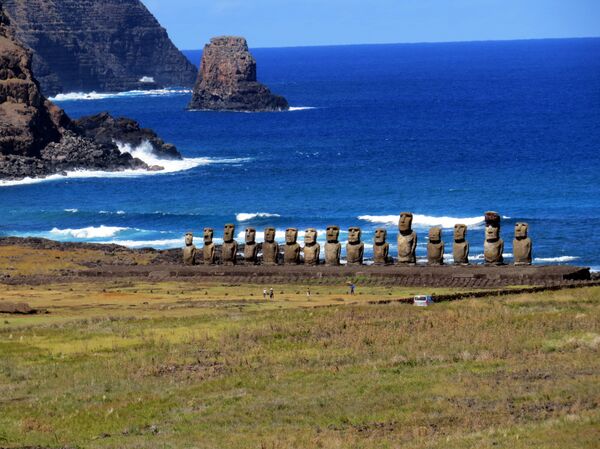A new study has revealed that the majestic monoliths of the Pacific Ocean island might have been placed to point the way to drinkable water. Results of the research, published in PLOS One journal, suggested that the monuments (known as moai) and the platforms or 'ahu' "locations are most parsimoniously explained by distance from freshwater sources, in particular coastal seeps, with important implications for community formation and inter-community competition in precontact times."
In their research, scientists conducted tests through to examine the relations between ahu and the three critical subsistence resources on Rapa Nui: rock mulch agricultural gardens, marine resource locations, and freshwater sources.
The authors' findings indicated that the monoliths corresponded with underground layer of water-bearing permeable rocks and places where fresh groundwater ran off into the ocean. The combination of the two may have been drinkable.
Fresh water was a limited and thus valuable resource for the indigenous people of Rapa Nui, something noted by early European visitors, who arrived on the island in 1722. They also saw that the islanders "drank coastal water, commenting that the water given to them by the Rapanui was "brackish and stinking" which was only "rendered acceptable by the extremity of their thirst" and later saying that they were even given "real salt water" and that the Rapanui "drank pretty plentifully" from the sea."
Researchers have also suggested there was a connection between the quantity and quality of the water at a site and the size of moai and ahu.
Easter Island monoliths remain a unique example prehistoric monument construction where, in a span of only about 500 years, Rapanui managed to erect 300 monuments and nearly 1000 multi-tonne anthropomorphic statues.




